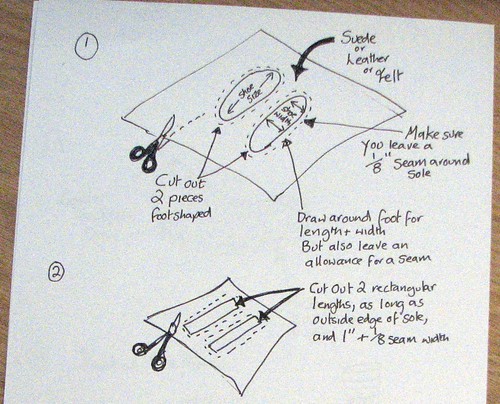Welcome to Erssie Knits
Got bored of my black blog, and white writing....and decided to go all White for Yuletide.
Hoping this makes it easier for people to read as well.
What have I been up to lately?
Mostly knitting samples for a shop.
Also collaborating on some new and exciting crochet designs, and delving deeper into the World of tapestry crochet....so watch out for some new designs, that are not knitting.
However, Stevie has found this fab alternative bring and buy Goth type fayre in the Dome, so cannot wait to get an invite to have a little table there and have been working on some new designs that fit into the theme.
I am always open as well, to someone else contributing their alternative stuff as long as they don't mind me taking some commission to cover cost of rail, stall or table.
Got a fab alternative piece of knitwear? Can you make it up to a high standard and fix a reasonable price? Then feel free to contact me.
And to the person that ordered 150 Christmas Cards from my Zazzle design with proceeds going to Greyhound rescue.....a big thanks!

Steve took some lovely pics of the studio, and I wrote about 700 words about my design process and other bits and pieces.

Even the hounds became featured....but Dizzy Rascal had an extra photo and was actually named in print....and Lily wasn't, so shhhh don't tell her. She would be most disgruntled after me making her wear woolly things and pose for photos for my patterns!


However, I made a slight variation by working into the back loops only, why I did this is explained in the FAQ below.

To help crochet people on Ravelry with their projects, there is a mini KAL on the Inside Crochet forum going on and I have put up an FAQ there which you can see below.
For anyone who also knits, I designed a knitted version of these too....which will be out in a KAL Media publication soon!
Also, for any extra pics of the mukluks and a close up of tapestry crochet swatches, go to my gallery for Inside Crochet issue 5, with pics (I will be adding more soon) including some explanation and a labelled diagram.
There is an erratum in the magazine, so the following rnds should read:
Rnd 29: *14 (17, 20) dc in A, miss 1 dc, 1 dc in A, rep from * to end of rnd
60 (72, 84) dc
Rnd 30: Idc in B in each dc 60 (72, 84) dc
End of 4th band

MUKLUK FAQ
Q: Where can I get the slipper bottoms
Regarding sourcing the bottoms, they come from Fibertrends and can be ordered from them, or the retailers the readers have found in the UK are:
The dragon yarns website, can sometimes be difficult to access so you need really to be in Internet Explorer as Firefox is not one of the browsers their website supports
Q: Do I need to use any special tools for tapestry crochet?
A: No, you will be able to use your ordinary crochet hooks but expect to use at least a size smaller than normally used for that gauge of yarn. it is not related to Tunisian crochet or a Tunisan hook. Tapestry Crochet is the term given to crochet which has tight colour work. Sometimes certain types of colour work in crochet are also called Jacquard, colour work, or mosaic crochet.
Q: Tapestry Crochet….is that using special stitches of any kind? Do I need to learn a new skill if I can already crochet?
A: Tapestry crochet mainly uses the same stitches you are used to. Most people use a normal double crochet UK (single crochet US) stitch. Sometimes, you might be asked to work the stitch into the back of a loop, or the front of the loop. Working into the back of the loop does two things. Firstly, it makes your fabric have a lot more drape i.e. it is not so stiff and secondly, it can straighten up stitches that normally have quite a slant on them. Tapestry crochet will be tighter than you are used to working but it is the closeness of these stitches that gives you the beauty of the colourwork with crisp edges. Also, the yarn you are not using are carried underneath the crochet stitching and if you did not work tightly, you might be able to see the other colours poking through.
Q: When I worked with different colours in knitting and crochet before, I got into a terrible mess. There are a lot of shades used in these mukluks…is it going to get in a tangle?
A: No, probably not. When you do colourwork in knitting, you may have lots of bobbins dangling and need to carry and twist yarns at the back of the work. These mukluks were designed with ease of carrying yarns in mind. You will see that on any one row there is no more than two shades used. You will work with one strand of yarn….and the other strand you will hold against the top of the previous row and just crochet around it like it was part of the fabric and cover it up. You will find carrying the colours stiffens your fabric, neatens the stitches and also…no weaving in!
Q: Can I use colour work graphs just like my knitting for tapestry crochet?
A: Yes, you can use existing graphs or you can design your own. However, the stitches are not going to have the same proportion as knit stitches, they are likely as well to have a slant either to the right or the left . This is because stitches are not directly above each other, they are worked and have a bias slightly to the side. Some of this can be straightened out a little by working into the back loops only.
Q: I have never tried tapestry crochet before, can I use it to make these mukluks/slipper socks for the first time?
I don’t see why not. However, I would get some oddments of yarns and a hook and practise on some flat swatches working from side to side, or swatches in the round before launching into the main project, just to see if the technique is for you. Apart from swatching, these slipper socks were my first large project using the technique and I found I could easily step into it from other types of crochet.
Q: I can see from this mukluk pattern, that you’ve got some slipper bottoms to sew on…what are those?
A: They are sole shaped pieces of suede, that also have a lip around the edge. Your foot should fit inside this with your mukluk on, and the lip should just be about 1/2 inch/1cm up the sides/edges of your foot. They should look like this


You can order these from Fibertrends or ask Get Knitted (their UK reps) if they can get hold of them for you. Some people have got them from a lady called The Button Lady that look like this

Leather soles can be bought from Twist Fibre Craft Studio UK
These soles below, are the wrong kind of soles, and the ones that most sheepskin workshops kept making for me. These are inner soles, not outer ones. You could use inner soles of sheepskin in addition to outer soles, but it is the outer sole that will give you the moccasin look.

Others have made their own. Either from cutting suede shapes or cutting felt shapes. If you want to do this, you would need to do this
- Draw around the sole of your shoe, or your foot, in an oval shape with straight sides (pill shaped) onto a piece of leather, suede or felt
- Next, add on 1/4 -1/8 inch seam. Then cut a long strip of suede,leather or felt at least 1 inch wide with another 1/4 -1/8 inch added on for the seam.

- Pin your long strip of suede all the way round the edge of the sole piece, with edges meeting at centre back of heel
- Next, machine sew this seam all the way around the outer edge as pinned.
- Trim inner edges of seam if necessary

- Using a bradawl, or similar tool, punch holes at regular intervals around the top edge of your slipper bottom.
- Using either a moccasin cross stitch, or a single whip stitch, sew the slipper bottom to the bottom of your slipper passing thread through the punched holes.
I have also heard that Dragon Yarns have something, but can’t recommend that until I have seen it and their website has been down for a couple of days.
Q: What if I can’t get suede soles?
You could equally use sheepskin, as the ‘suede’ side of that is non slip. You could also try using some of the more solid outdoor shoe bottoms people sell.
You can also use a couple of pieces on the bottom, although your Mukluks would look more like socks at least this makes them non slip. The two piece bottoms look like this

You can also buy a special type of non-slip paint/gel that you can blob onto the bottom of your socks/slippers that give a sticky grippy quality to them. You can paint designs like this

Q: I have hand problems/arm disabilities and I am worried about having to use a smaller hook on tighter fabric do you think it is best for me not to try this?
A:No, do give it a go. Even if you work with tiny hooks if you choose a padded wide handled hook e.g. Clover Soft Touch, the handle size does not change even when the hook sizes are tiny. Although the fabric will be firm, if you choose soft yarn like Rowan Felted Tweed rather than a crochet cotton, you will find it is fairly soft to work with. Working into the back loops only is much easier too. Here are some tips
Tips for Working Tapestry Crochet with a hand disability
- Make sure you use a hook that has a wide or padded handle on it so you can grip easily
- If you can’t find a wide padded handled hook, then make your own by getting your OT to give you some tubular foam or gripping handle, or make a handle out of Fimo and bake in the oven
- If your wrists are stiff, or fixed and you cannot flick your wrists to pick up yarn onto your hook, then keep the wrist stable and use the other hand to throw the yarn over the hook much like knitting.
- Take regular breaks, and try to keep your movements wide and fluid and not small angular and repetitive
- Choose a yarn which is light and soft rather than a heavy or rough cotton yarn.
- Alternate between crocheting, and another craft with a different hand movement
- Don’t work through pain, stop and re-adjust so the pain stops or stop altogether and rest. Listen to your body, if you feel pain it is not a good sign.
- Always try a technique out on a small swatch, and see if there are problems before launching into a main project and disappointing yourself that you don’t enjoy it because it is awkward or painful.
- You can have a go at working with arm/hand splints on. It is easier to tapestry crochet with splints on that it is to knit






